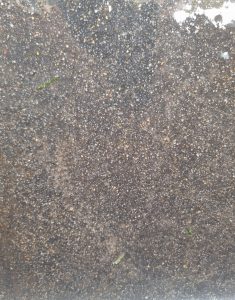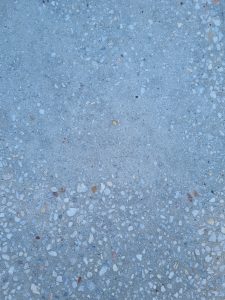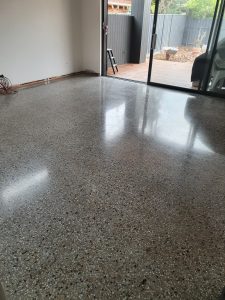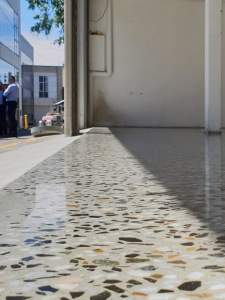What are the benefits of concrete polished floors? How are they polished?
Polished concrete is stylish, attractive, durable, needs little maintenance, is very easy to clean and can last a lifetime with proper care. After 10 years or so floors may just need an enzyme clean, buff and reseal to bring them back to new.
Each polished floor is unique with different levels of aggregate exposure and with different sealers being used to achieve the finish you require, including non-slip surfaces.
Floor preparation work may need to be done first if there is tile grout or carpet glue on the existing floor. I have experience also in grinding concrete required before the laying of tiles or timber floors.
There are 4 types of concrete exposure, or styles – burnished, minimal exposure, medium exposure and full exposure.
There are also 3 types of concrete finishes – matt finish, satin finish and a high gloss finish.
Burnished
This is a floor where there is no exposure of aggregate (stones in the concrete). It involves making the floor smooth and shiny with polishing pads. The floor needs to be flat and is often, but not always, newly poured concrete.


Minimal Exposure
There is minimal exposure of just the tips of the stones, or aggregate. Sometimes called ‘salt and pepper’ exposure.
Medium Exposure
Most of the aggregate is showing, with patches in between.


Full Exposure
All the stones in the concrete are visible. This exposure requires the most steps to complete.
Matt Finish
This is suitable for any area and has a non-shine finish.


Satin Finish
This is in between matt and high gloss. It is shiny but not slippery and is the most common finish used.
High Gloss
The shiniest finish, used for interiors only.

